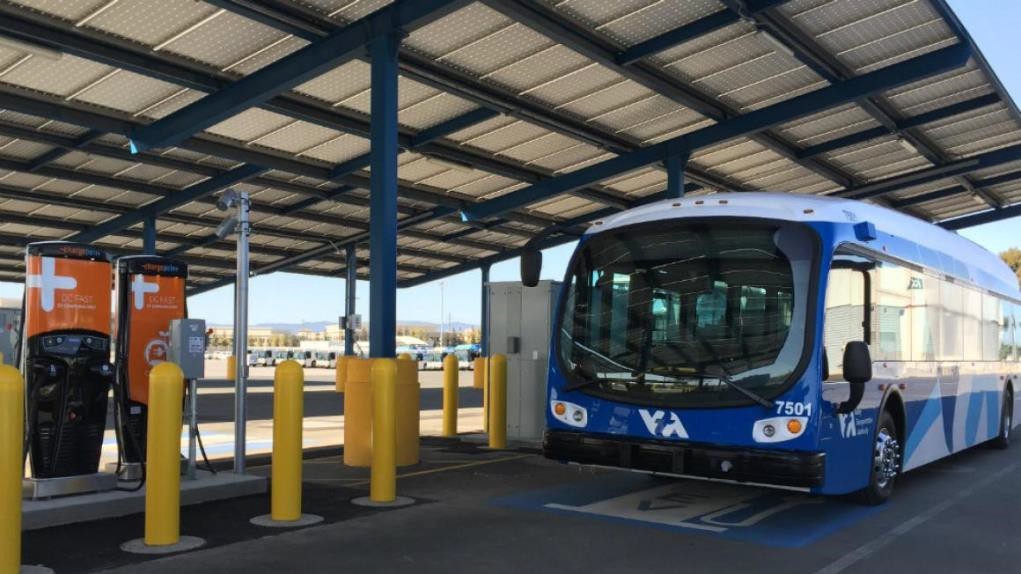
A Guide to Green Energy Adoption for Transit Agencies
- Date: February 16, 2022
Jump to section
Prepared by:
Drew Turro, Maggie Maddrey, Claudia Brand, Reese Rogers and the Center for Transportation and the Environment.
Introduction
The N-CATT Guide to Green Energy Adoption for Transit Agencies (Green Energy Guide) is a tool for educating small-urban, rural, and tribal transit agencies on existing and emerging options for powering their transit operations with green electric power. This whitepaper focuses on green electric power as a fuel supply for battery electric vehicles (BEV). It is segmented into chapters that each focus on an important aspect of understanding and procuring green energy technologies to power transit agency operations. Collectively, the chapters provide an overview of the green energy resources and technologies available to transit agencies, considerations regarding procurement of green power, and strategies that may maximize the benefits of these green energy charging options.
N-CATT produced a separate whitepaper, Hydrogen as a Transportation Fuel in Rural Communities, that describes technologies and strategies for deploying hydrogen-powered fuel cell electric vehicles. N-CATT also produced the whitepaper Building Successful Partnerships between Rural Transit Systems Deploying Zero-Emission Vehicles and their Electric Utilities, which is useful to agencies navigating relationships with their local electricity providers regardless of zero-emission vehicle technology being implemented.
What is green power?
The US Environmental Protection Agency (EPA) defines green power as
“electricity supplied from a subset of renewable resources that provide the highest environmental benefit”
Green power generally does not include some resources that are often considered as renewable energy including large hydropower and municipal solid waste” (EPA, 2018). Although the precise definition of green power may vary between jurisdictions for regulatory purposes, green power resources are often the resources designated as acceptable for emissions mandates and environmental goals under many regulatory schemes. For transit agencies voluntarily seeking to pursue cleaner operations, green power resources are the most environmentally friendly electricity sources available.
Why is green power important for transit agencies?
The transportation sector is the largest contributor to greenhouse gas emissions in the United States, accounting for almost 30% of the country’s total emissions. These emissions are produced by the burning of fossil fuels in vehicle engines but also through the extraction, refining, and transport of these fuels before they get to their end user.
Electricity production is second only to transportation in terms of greenhouse gas emissions by economic sector. The parallel growth of zero-emission electricity production alongside zero- emission vehicles provides opportunities for capturing environmental benefits in local communities while enhancing transit agencies’ abilities to adapt to new operational situations posed by zero-emission vehicles.
For the shift to zero-emission transit to be truly carbon-free, one must look at the entire energy lifecycle of the vehicle. The “pump-to-tailpipe” emissions are only one component of this cycle. The upstream emissions, those that come from the production of electricity or hydrogen that eventually power the vehicles, contribute GHG emissions to the lifecycle of the vehicles. Fortunately, zero-emission energy technologies, like solar panels and battery energy storage, are becoming more prevalent and available in the energy sector, just as zero-emission vehicles are being adopted in the transportation sector.
A transit agency may seek out green power for a variety of reasons: internal, local, or state emissions reduction goals, possible cost savings, or increased operational control of power sources as an agency deploys zero-emission vehicles. This series of connected yet standalone papers aims to shed light on the various types of green energy resources and technologies, how an agency can procure green energy, and operational strategies to maximize benefits from these renewable energy resources.
